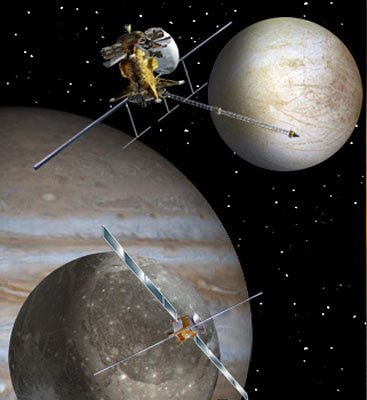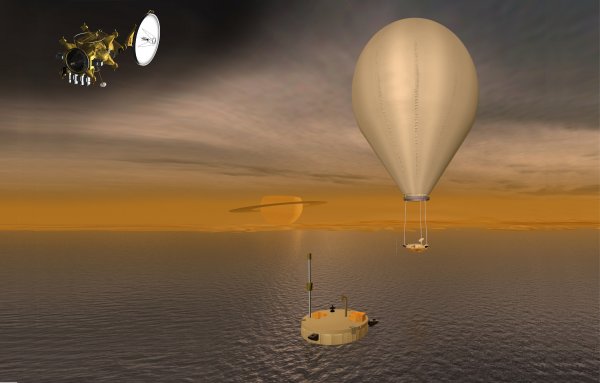
NASA and the European Space Agency (ESA) have agreed to develop two co-ordinated scientific missions to study Jupiter and several of its moons. NASA’s Jupiter Europa Orbiter and ESA’s Jupiter Ganymede Orbiter are scheduled for separate 2020 launches and should reach the Jupiter system in 2026. The combined effort is called the Europa Jupiter System Mission.
Before the agreement, which was struck at a meeting in Washington last week, NASA had been considering two missions to the gas giants — one to Europa and the other to Saturn’s moon Titan. Likewise, ESA was looking at missions to Jupiter and Saturn, with the possibility of landing on Europa and Titan respectively. Officials from both agencies have now decided that it will be more feasible to implement a co-ordinated Jupiter mission first.
However, the Saturn mission has not been forgotten, with the two agencies planning to “move [it] forward for further study and implementation”. Dubbed Titan Saturn System Mission, the joint project is expected to consist of a NASA orbiter and an ESA lander and research balloon. It will be launched sometime after the Jupiter mission.
‘Win, win situation’
Ed Weiler of NASA’s Science Mission Directorate called the agreement a “win, win situation”, adding “a Saturn system mission clearly remains a priority for the science community”. David Southwood, ESA’s director of science and robotic exploration, described the joint endeavour as “a landmark of 21st century planetary exploration”.
The Europa Jupiter System Mission orbiters will spend at least three years studying Jupiter and its moons Callisto, Gannymede, Europa and Io. The Jupiter Europa Orbiter should shed further light on whether oceans of liquid water exist on Europa — and whether the moon could harbour life. Meanwhile, the Jupiter Ganymede Orbiter could help scientists to understand why Ganymede is the only moon in the solar system known to have an internally generated magnetic field. The two orbiters will also work together to gain a better understanding of the formation and evolution of the Jovian system.
NASA and ESA have already collaborated on planetary missions. In 1997 they launched the Cassini–Huygens joint mission to Saturn, in which NASA supplied the Cassini orbiter and ESA built the Huygens probe.




